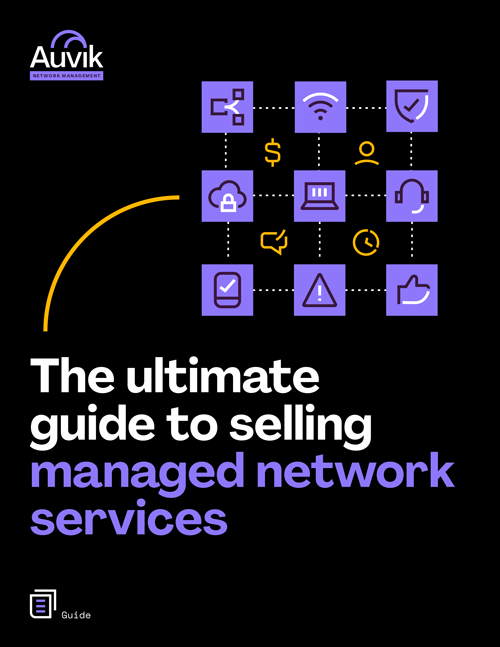With that said, let’s get back to first principles of selling. And while it might not be as sexy as you would hope, these first principles of a solid MSP sales process will always stand the test of time.
1. Diversify Your Top of Funnel Sources
“We generate new business based on referrals.” This is a common response when we ask how our MSP customers plan on growing their businesses. While referrals and word of mouth can be awesome sources for leads with great conversion, there are other ways to diversify your lead sources to maximize opportunities. As Jeb Blount mentions in his book Fanatical Prospecting
“In sales, consistently relying on a single prospecting methodology (usually the one you feel generates the least amount of resistance and rejection), at the expense of others, consistently generates mediocre results.”
For those MSPs that can drive business solely on referrals—congratulations!
But I would suggest you think about what could have been if you’d also pursued other avenues. Think about the money you’re leaving on the table by not going out, diversifying, and seizing opportunities.

Your Guide to Selling Managed Network Services
Get templates for network assessment reports, presentations, pricing & more—designed just for MSPs.
So with that, here are some other avenues to drive leads and interest:
Virtual and Field Marketing
Consider things like Chamber of Commerce events, local speaking opportunities, guest speaking opportunities, and trade shows. These are great ways to widen your audience and build awareness. When getting out there as part of your MSP sales process, be sure to consider the critical elements of your “pitch”:
- Is my message relevant and compelling to this audience?
- With so many MSPs out there, what’s our unique value and differentiation? Am I clearly communicating them?
- If I am paying for this engagement/event, is there a list of attendees I can get to call into?
- Bonus tip: If you have a booth, consider swag giveaways in exchange for business cards!
SEO + Consulting
I would caution getting into paid actions, like Google Adwords, on your own if you’re not well versed, as it can become quite expensive and non-focused if you are not trained on how to laser-focus your target audience with the right message. Instead, why not look to bring in a consultant who can advise you on your digital and paid ad strategies for a strong MSP sales process that fits your situation, or consider taking the time to educate yourself, through something like a Robin Robins seminar?
Partners + Strategic Alliances
Consider the vendors you work with. Oftentimes they have partner/reseller programs that include an opportunity to receive leads. Focus on the most mutually beneficial partnerships and opportunities to share leads, and consider partnering up with someone complimentary in the space like an ISP/VOIP/Managed Print Provider.
Outbound
There’s simply no better conversion you can get than going after the accounts that you want and that are perfect fits for your solution. Start with building your ideal client profile (who and what organizations could benefit from our solution? Who do we have expertise in and a compelling offering for?), and from that, start to match names with that profile. Then come up with a plan of attack for each.
Tools like LinkedIn Sales Navigator or Salesloft can be awesome in helping find contacts for those organizations and for developing and nurturing your outbound target list.

2. Understand and be curious about your customer—it’s about them not you
So now you’ve got a whole bunch of great leads and some are even agreeing to meet with you. Now what?
Whether you’ve fallen victim to this or witnessed it first hand, we’ve all been there—you agree to a meeting, and the sales rep brings up a 50-slide PowerPoint and starts into a 40-minute drone-versation about why their product and company is so great and why you should care. With so many offerings out there and limited attention spans, it’s the last thing anyone wants. While I hate to say it, there continue to be enough salespeople still doing this that it remains the expectation. How about instead we disarm and delight our prospective customers by keeping the focus all on them:
- What are their goals for the year? What’s getting in the way of that?
- What are they hoping to get out of speaking with you?
- Based on what you are hearing from this prospective customer, what are things you and your team can uniquely solve for?
By asking these questions and uncovering these rocks you can build value, trust and respect with the customer. Many sales methodologies adopt this notion of value-selling, but the underlying principles are that if you genuinely understand your customer, and if you and your prospective customer can develop a mutual understanding of how you and your services can solve problems and add value to them and their business, you will stand head and shoulders above everyone else. And it’ll be you who wins the business.
Keep in mind that capturing and documenting all of this precious information shared with you (and sharing back with your customer) is also important:
- This may be the first time the customer has been able to put their thoughts and goals down on paper. If anything, this can be a value-add to their business planning and strategy initiatives
- It keeps you both on the same page
- If it’s shared, anything unclear can be clarified, and more context can be added
- It will keep coming back in future conversations. QBRs, budget justifications, renewals, project work, etc. Much of these conversations become easier when we can go back to basics– what sparked the interest, what goals and problems are they looking to solve, what unique value do we deliver
So you’ve found them, you’ve intrigued them. What’s next?

3. Next Steps
Next Steps are the lifeblood of the sales process—it’s what keeps things moving. A meeting with a customer should never wrap up without an agreed upon next step (to be even more fanatical, a next step that is in the calendar and is accepted by the customer). Seems assertive, but with the pace things are moving, and distractions that abound, this is your security for making things get and stay on the books. What type of next step may vary:
- If it’s the first meeting to gauge interest, your next step might be to do a demo/assessment of your services to prove fit
- If the customer is sold on what you can do, perhaps the next step is arranging a time to review commercials and start onboarding
- If the customer is sold and onboarded, the next step could be booking your QBR appointment to see how things are coming together
The key here is to make sure each next step is relevant and agreed upon, nothing worse than agreeing to commit time with no plan or intention in place.

Your Guide to Selling Managed Network Services
Get templates for network assessment reports, presentations, pricing & more—designed just for MSPs.
What do you consider your first principles? Leave it in the comments below!


